When the Forest Comes Alive
There’s a hush in the Smoky Mountains that you only notice when you’re truly listening. It’s not silence—it’s the soft rustle of leaves, the distant bugle of an elk, or the almost imperceptible snap of a twig that says you’re not alone in the woods. I’ve spent most of my life hiking these hills, and let me tell you: spotting wildlife here isn’t just an experience—it’s a privilege.
The first time I saw a black bear, I was ten years old and hiking with my grandfather in Cades Cove. It wasn’t dramatic. The bear was just grazing in a meadow, maybe fifty yards off. But the way my grandfather froze, lowered his voice, and just watched with quiet respect—that stuck with me. That moment was a turning point in how I saw the Smoky Mountains. It became more than scenery. It became alive.
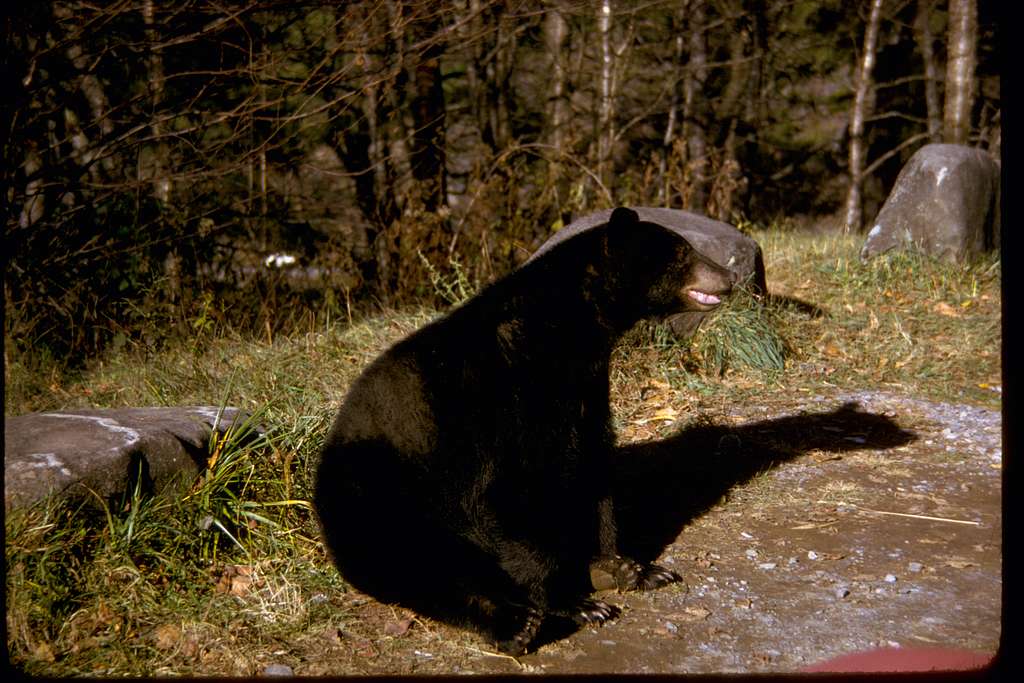
If you’re hoping to spot wildlife—especially black bears or the majestic elk that have reclaimed parts of this park—you’re in the right place. But there’s a right way to do it. Smoky Mountain wildlife should never be approached, never baited, and never underestimated. In this guide, I’ll walk you through how to enjoy these encounters safely, ethically, and with the kind of reverence these creatures deserve.
You’ll learn where and when to go, how to behave around these wild animals, and what gear to bring to keep yourself and the wildlife safe. We’ll explore quiet valleys and highland overlooks—places where nature still writes the rules.
Want a chance to wake up near Cades Cove or Cataloochee? Book your stay in the heart of the action.
Understanding Smoky Mountain Wildlife
Know What You’re Looking For Before You Step on the Trail
Before you even lace up your boots, it helps to know a little about the wild neighbors you might encounter. The Smoky Mountain wildlife scene is richer than most folks realize. With over 65 species of mammals, 200 types of birds, and thousands of plant varieties, these mountains hold more life per square mile than any other national park in North America.
But among all that biodiversity, two stars tend to steal the show: the black bear and the elk.
Black Bears: The Smokies’ Iconic Resident
If the Smokies had a mascot, it’d be the black bear. With a population estimated at over 1,500 inside the park, you have a decent chance of seeing one if you’re patient—and lucky. These bears are typically shy and avoid humans, but they’ll be drawn to food or trash if you’re careless. Spotting one from a distance, foraging or meandering through the woods, is one of the most awe-inspiring—and safest—ways to enjoy them.
They’re active primarily in the early morning and evening hours, especially from late spring to early fall when food is plentiful.
Elk: The Gentle Giants of the Smokies
Reintroduced to the park in 2001, elk are now thriving in the Cataloochee Valley and around Oconaluftee. During the fall mating season—called the rut—you can hear males bugling, a sound that seems to come from another world. Elk are impressive not only for their size (males can weigh 700+ pounds) but for their grace. It’s hard to forget the sight of one stepping through a misty meadow at dawn.
Other Wildlife You Might Encounter
- White-tailed deer—commonly seen in Cades Cove and Roaring Fork
- Wild turkeys—especially active in open meadows
- Coyotes, foxes, and bobcats—rare to see but they’re out there
- Birds—from pileated woodpeckers to barred owls
Understanding who you might meet helps you prepare—and helps you appreciate just how special this place really is.
Stay close to nature—literally. Wake up where the wildlife wakes up.
Best Times of Year and Day to See Wildlife
Patience and Timing Make All the Difference
You can hike every trail in the park, but if your timing is off, the Smoky Mountain wildlife might remain hidden in the shadows. That’s because nature doesn’t run on our schedules—it follows rhythm, season, and survival.
Time of Day: Golden Hours Matter
Most animals in the Smokies are crepuscular—meaning they’re most active at dawn and dusk. That first light breaking over the ridgelines or the golden hue that settles in the valleys at sunset? That’s prime time for spotting movement in the brush.
I’ve seen more bears in the soft quiet of 7:00 AM than in all my afternoon hikes combined. Elk, too, tend to graze and move during these early and late hours, often emerging from the forest into clearings as the sun is low.
Tip: Bring binoculars and a thermos of coffee and settle in. Wildlife watching is as much about stillness as it is about seeking.
Best Seasons for Wildlife Watching
- Spring (April–June):
Bears become active after hibernation, often with cubs in tow. Wildflowers bloom, and the air is cool. Elk sightings increase near Oconaluftee and Cataloochee. - Summer (July–August):
Early mornings are your best bet. Afternoon heat drives most animals to shaded spots. - Fall (September–November):
Elk rut season! Bull elk bugle to attract mates, and the sounds echo hauntingly through the valleys. Bears are highly active before winter and can be spotted in Cades Cove. - Winter (December–March):
Wildlife is less visible, but some hardy species (like turkeys, deer, and occasional bear sightings) are still around. Plus, there’s beauty in the quiet.
Want front-row seats to the Smokies’ most active seasons? Book your stay nearby before they fill up.
Top Places to Spot Bears and Elk Safely
Where the Wild Things Are—If You Know Where to Look
If you want a real chance to witness Smoky Mountain wildlife in its natural rhythm, you have to go where the animals roam—and respect the space they call home. Over the years, I’ve learned that the best spots aren’t always marked with big signs or gift shops. They’re found by those willing to rise early, drive slowly, and wait quietly.
Here are a few of the best wildlife-watching gems, where bears and elk still follow ancient paths through the valleys and hillsides.
Cades Cove: A Bear Watcher’s Paradise
If you came to see black bears, this is your best bet. The one-way, 11-mile loop through Cades Cove offers open meadows and wooded hollows, perfect for catching sight of a mother bear with cubs or a lone boar lumbering across a field.
Drive slowly (the speed limit is 20 mph for a reason) and keep your eyes peeled in the morning and evening. I’ve had entire bear families cross the road right in front of my Jeep, and it never gets old.
Pro Tip: Go mid-week or during the shoulder seasons to avoid the traffic.
Cataloochee Valley: The Smokies’ Elk Kingdom
Nestled in the quieter eastern corner of the park, this valley feels untouched by time—and it’s where elk roam most freely. Early morning and dusk are magical here, especially during the fall rut when the bulls bugle and lock antlers over open meadows.
Bring a good camera with a zoom lens, stay on the roadside, and don’t try to approach. Elk may seem calm, but they are wild, and they’re big.
Note: The gravel road into Cataloochee can be tricky—drive carefully.
Roaring Fork Motor Nature Trail
This lush, shady route is great for bear and deer sightings, especially in the warmer months when animals come closer to drink from creeks. It’s also less crowded than Cades Cove and makes for a peaceful drive or hike with plenty of photo ops.
Keep a respectful distance—bears spotted here are often within the tree line or on quiet trails.
Oconaluftee Visitor Center Fields
Right outside Cherokee, NC, the open fields near this visitor center are a popular hangout for elk, especially in the early morning. You might also see wild turkeys, deer, and the occasional fox if you’re lucky. And it’s easily accessible, making it a good option for families or folks who can’t hike far.
Ready to rise with the elk and roam where the bears wander? Book your cabin nearby.
How to Spot Wildlife Without Disturbing It
Because a Safe Encounter Is the Best Kind
There’s an unspoken rule in the Smokies: Smoky Mountain wildlife should be observed, not interrupted. You’re not just walking into the forest—you’re stepping into someone else’s home. And just like any guest with good manners, the key is to be quiet, respectful, and mindful of how your presence affects the scene.
Over the years, I’ve seen folks do everything right—and others ruin a peaceful elk moment by yelling or getting too close with a cell phone. If you want a real, raw wildlife experience, these tips will help you stay safe while honoring the animals.
Practice Patience and Stillness
Bears and elk have sharp senses—especially hearing. If you barrel down a trail chatting loudly or crunching gravel with heavy boots, they’ll vanish long before you catch a glimpse. Take your time. Pause often. Let the forest settle around you.
I’ve had some of my most moving encounters just by sitting still and watching a meadow for 30 minutes. Movement catches your eye—but it’s stillness that invites wildlife closer.
Use Binoculars or a Zoom Lens
Don’t rely on your phone’s camera to get a good shot. Not only does zooming in usually give you a blurry photo, but it can also tempt people to get dangerously close.
Bring real binoculars or a decent zoom lens. That way, you can capture the moment without stepping too far into the animal’s world.
Respect the 50-Yard Rule for Bears and Elk
The National Park Service asks visitors to stay at least 50 yards away from bears and elk. That’s roughly half a football field. If you’re unsure—just don’t get closer. Period.
And if the animal changes its behavior because of your presence—back off. That means you’re too close.
Don’t Feed Wildlife. Ever.
It may seem harmless to toss out some snacks or bread, but feeding animals teaches them to approach humans—and that often ends tragically. Fed animals become aggressive, and they’re usually euthanized for it.
Keep your food sealed, your trash packed out, and your hands to yourself. Respect is protection.
Stay on Designated Trails and Pull-Offs
If you want to see Smoky Mountain wildlife in a way that leaves the smallest footprint, stick to the trail. Park rangers designed these paths for safety—both yours and the animals’. Trampling meadows or sneaking off-trail disturbs nesting areas, feeding spots, and even rare plant life.
Want to enjoy the Smokies without disturbing a thing? Stay nearby and let the wild come to you.
What to Do (and Not Do) Around Bears
Admire the Majesty—But Don’t Forget the Muscle
There’s nothing quite like the moment you spot a bear in the Smokies. Maybe it’s a silhouette moving through the treeline or the unmistakable huff of breath as it forages for acorns. I’ve seen black bears dozens of times in my years exploring Smoky Mountain wildlife, and I’m still awestruck every time. But I’m also cautious—because the moment you let your guard down is the moment trouble finds you.
Bears in the Smokies aren’t interested in you. They’re not aggressive by nature. But they are wild, strong, and easily stressed. If you want your bear encounter to be memorable for the right reasons, here’s how to keep it safe and respectful.
Features
| Is Adult Product | |
| Language | English |
| Number Of Pages | 251 |
| Publication Date | 2024-10-12T00:00:01Z |
Features
| Part Number | RGL-GS2 |
| Model | RGL-GS2 |
| Color | Black |
- Authentic vintage Gatlinburg Black Bear magnet for the traveling collector
- Magnet Measures 4.1″ x 2.5″
- Made in the U.S.A. by Ideaman, Inc., the manufacturers of the Original Classic souvenir magnets!
- Features “Gatlinburg” raised on the side of the most popular animal in the Smoky Mountains!
- Great for the Souvenir Magnet Collector!
Features
| Is Adult Product | |
| Language | English |
| Number Of Pages | 205 |
| Publication Date | 2025-06-09T00:00:01Z |
Never Approach a Bear—No Matter How Calm It Looks
Even if the bear seems uninterested, do not get closer. Every year, people get too comfortable with wildlife, and it ends in emergency calls—or worse. Keep your distance, observe quietly, and never move between a mother and her cubs.
Tip: If you’re close enough to make a bear change its direction or stop feeding, you’re way too close.
Don’t Run or Scream
This is hard—especially if you’re surprised. But running can trigger a bear’s chase instinct. Stay calm, talk in a low voice, and slowly back away. Keep your eyes on the bear without staring it down.
In most cases, if the bear sees you’re not a threat, it’ll move on.
Know the Signs of Bear Behavior
- Curious: Stands on hind legs, sniffing. Not aggressive.
- Agitated: Huffs, pops its jaws, or slaps the ground. Time to back away.
- Defensive: Blows air, charges and stops short—this is a bluff. Stay calm and retreat slowly.
- Predatory (extremely rare): Follows you, silent, steady. If attacked, fight back with anything available.
Bear Spray: Bring It, Know It, Use It
Bear spray is your best friend in bear country—but only if you know how to use it. Keep it accessible (not buried in your backpack), read the instructions before you hit the trail, and only use it if a bear charges.
I’ve never had to use mine. But knowing it’s there gives me—and the folks I hike with—peace of mind.
Secure Your Food and Trash
Bears have an excellent sense of smell and a long memory. If they find food in your pack, your car, or your trash, they’ll come back—and that puts future hikers at risk. Always use bear-proof containers and follow park guidelines.
Make your bear sighting a memory—not a mistake. Stay close, stay smart, and stay safe.
Staying Safe While Elk Watching
Graceful, Giant, and Not to Be Underestimated
There’s something ethereal about seeing an elk stride through the misty fields of Cataloochee or the pastures by Oconaluftee. They move with such calm that it’s easy to forget you’re looking at an animal that weighs up to 800 pounds and can run 45 miles per hour.
As part of Smoky Mountain wildlife, elk are a success story—reintroduced to the park in 2001 after being hunted to local extinction. But with their return comes the need for us to relearn how to live—and view—wildlife respectfully.
Keep Your Distance, Especially During Rut Season
Fall is when things get loud in elk country. From late September through October, bull elk bugle, posture, and battle for mates. It’s spectacular to witness but also the most dangerous time to get too close.
I’ve seen otherwise calm elk become agitated in a matter of seconds when tourists crept in for “just one photo.” Bulls are focused, territorial, and absolutely not afraid to charge.
Best Practice: Stay at least 50 yards away—and more during the rut. A good camera lens or binoculars is essential.








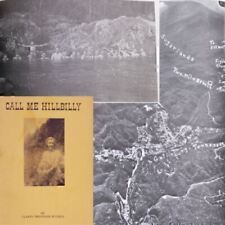
Cows with Calves = Do Not Approach
Spring and early summer bring a quieter kind of tension. Elk mothers protect their calves fiercely, and they see approaching humans as threats. If a cow elk snorts, stomps, or pins her ears back—back away immediately.
If you stumble upon a calf alone, don’t assume it’s abandoned. Mom is likely nearby, and your presence is not appreciated.
Stick to Roads and Viewing Pull-Offs
The park has done a great job of creating accessible viewing areas—especially near Oconaluftee. Use them. I’ve had fantastic encounters simply by pulling off safely, rolling down the windows, and listening.
Roaming through the meadows, trying to get closer, or chasing elk for a better angle is not just disruptive—it’s illegal.
Leave the Calling to the Elk
I’ve heard folks try to mimic a bugle, thinking it’s fun or harmless. But this kind of interference confuses elk, interrupts natural behavior, and can actually attract danger—especially during rut.
Instead, enjoy the experience quietly. Take in the sounds without trying to join the chorus.
Get up early, stay close, and let the Smokies show off their wildest side. Book your cabin near elk country now.
What to Bring for Safe and Responsible Wildlife Watching
Because Preparation Makes the Moment Possible
I’ve always believed that the right gear doesn’t just make the trail easier—it makes it safer, more respectful, and a whole lot more enjoyable. Whether you’re hoping to spot a black bear lumbering across Cades Cove or hear the echo of an elk bugle in Cataloochee, your pack should be more than a snack sack. When it comes to viewing Smoky Mountain wildlife, preparation shows you care.
Here’s what I never hit the trail without—especially when wildlife is the goal.
Binoculars or a Zoom Lens
If you’re serious about spotting wildlife from a safe distance, this is non-negotiable. A solid pair of binoculars lets you watch animal behavior without disturbing it. And if you’re hoping for that Instagram-worthy shot, leave the phone zoom behind—bring a real camera lens.
Bear Spray (And Know How to Use It)
You probably won’t need it. I never have. But if you’re venturing into bear country (which, in the Smokies, is basically everywhere), bear spray offers peace of mind. Keep it accessible—not buried under your lunch—and read the directions before you hike.
Pro Tip: Practice the motion. If a bluff charge happens, you won’t want to fumble.
Trail Map or Offline GPS App
Even familiar trails can get confusing in fog or fading light. Wildlife watching can take you off your planned timing, and the Smokies are notorious for poor cell reception. Download a map or use a GPS app with offline functionality.


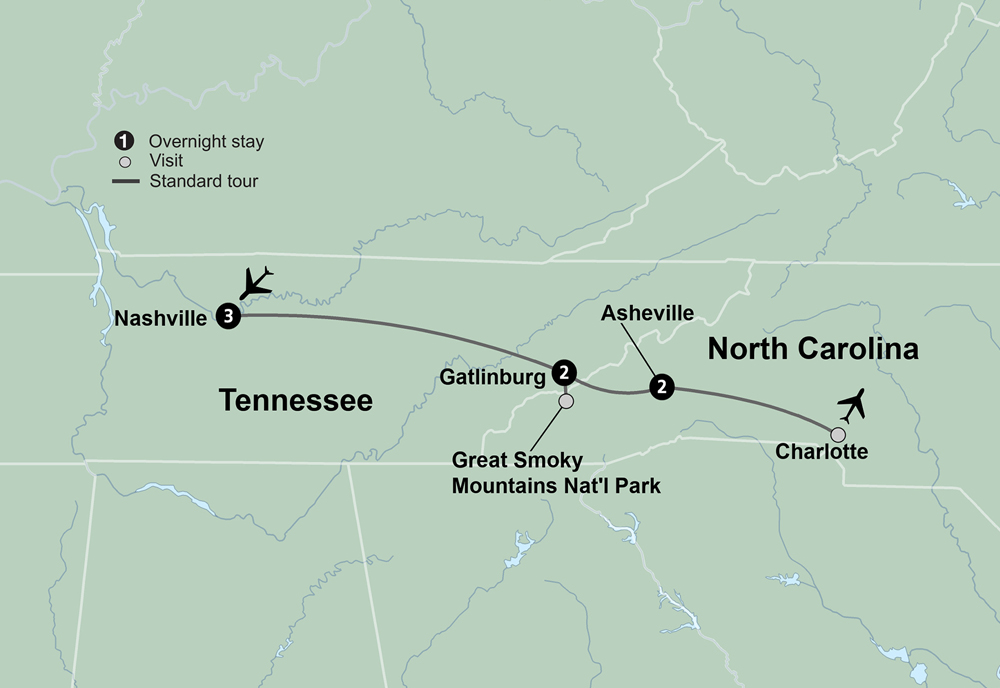

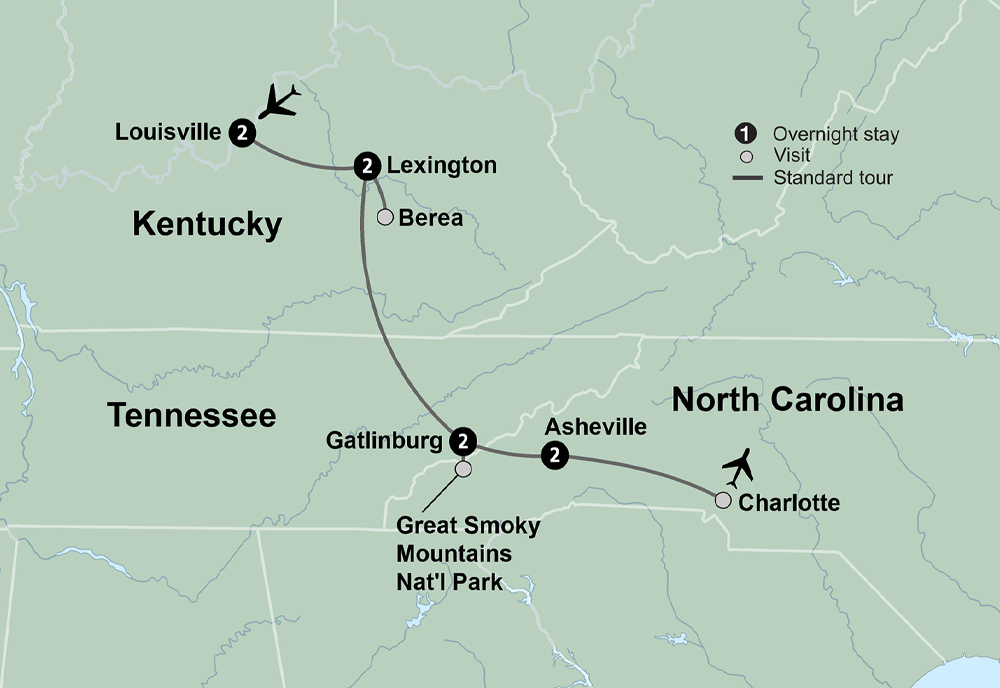

Headlamp or Flashlight
Early mornings and twilight hikes offer the best chances for Smoky Mountain wildlife viewing—but they also mean navigating in low light. A headlamp lets you keep your hands free and your footing sure.
Quiet Layers and Neutral Colors
You want to blend in, not broadcast your arrival. Choose earth tones and quiet, rustle-free clothing. Leave the bright neon windbreaker for another day.
Notebook and Field Guide
Maybe it’s the journalist in me, but I still love jotting down where I saw a bear or what time the elk wandered into the field. A pocket field guide helps you ID wildflowers, animal tracks, or birdsongs along the way.
Respectful Mindset
This might be the most important thing you bring. Come not just to see, but to learn. Not just to photograph, but to witness. Wildlife watching is a two-way relationship—what you give in patience, you receive in unforgettable moments.
Ready to pack your bag and wake up wild? Book your lodging near the trails today.
FAQ: What Visitors Ask Most About Smoky Mountain Wildlife
What’s the best time of year to see Smoky Mountain wildlife?
It depends on what you’re hoping to see. Spring and fall are the best for overall wildlife activity. Spring brings bears out of hibernation, and fall is the dramatic elk rut season. Early mornings and just before sunset (what we call the “golden hours”) are your best chances year-round.
Are bear encounters common in the park?
They’re not rare, but they’re not guaranteed either. Black bears are shy and usually avoid humans. That said, if you’re hiking in Cades Cove, Roaring Fork, or Deep Creek, especially early in the morning, your odds go up. Always observe from a safe distance and never approach.
What should I do if I see a bear on a trail?
Stay calm. Talk in a low voice and slowly back away. Never run or scream. If the bear approaches or acts aggressively, stand your ground and prepare to use bear spray if necessary. Most bear encounters in the Smokies end peacefully—especially when hikers respect boundaries.
Where’s the best place to see elk?
Cataloochee Valley is the top spot, especially during the fall rut (late September to early October). Oconaluftee Visitor Center fields are another accessible elk-watching location. Just remember: keep your distance and use binoculars or a zoom lens to get that perfect view.
Is it safe to bring kids on wildlife-viewing hikes?
Absolutely—many of the best wildlife areas, like Cades Cove and Oconaluftee, are very family-friendly. Just set expectations early: animals are not attractions, and patience is key. It’s also a great chance to teach young ones about respect for nature and safe behavior.
What should I pack for a wildlife-watching trip?
Binoculars, camera with zoom lens, trail map, bear spray, neutral-colored clothes, snacks, water, and patience. For a full breakdown, check out the what to bring section above.
Want to stay close to the action? Explore lodging that puts you right where the wild things are.
Witness the Wild, Leave Only Awe
There’s a hum to the Smokies that you don’t hear—it’s something you feel. It’s in the rustle of brush before a bear steps into view. It’s in the hush of a meadow just before an elk lifts its head from the grass. It’s in that moment when you realize you’ve left behind the buzz of the world and stepped into something primal, something sacred.
Smoky Mountain wildlife isn’t a checklist or a thrill ride. It’s a relationship. One built on respect, patience, and the willingness to observe instead of control. You don’t just visit these mountains—you meet them. And the ones who meet them with humility are the ones who come away changed.
I’ve watched bears fish in sunrise shadows and listened to elk bugles echo off ridgelines. I’ve waited in the cold for hours just to glimpse movement, and I’ve never once regretted the wait. Because when it happens—when wildness looks you in the eye—it stays with you.
So here’s my advice:
Come early. Stay late. Tread gently. Listen often.
And when you go to sleep at night, make sure you’re staying close enough to wake up in their world again tomorrow.










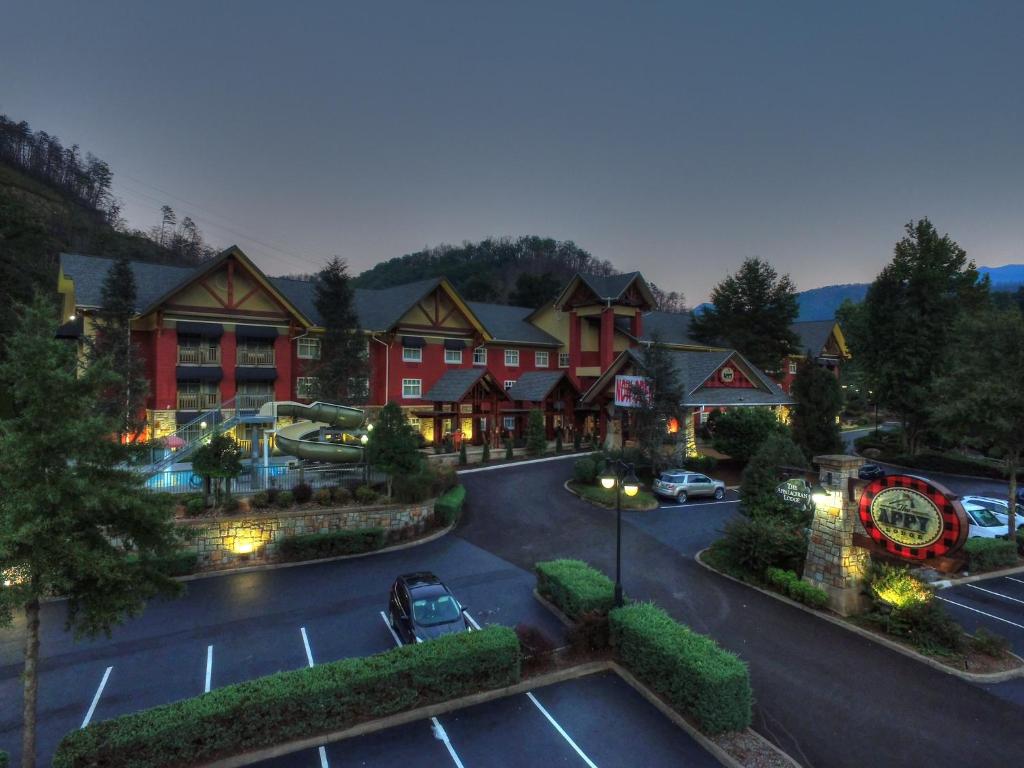









Leave a Reply